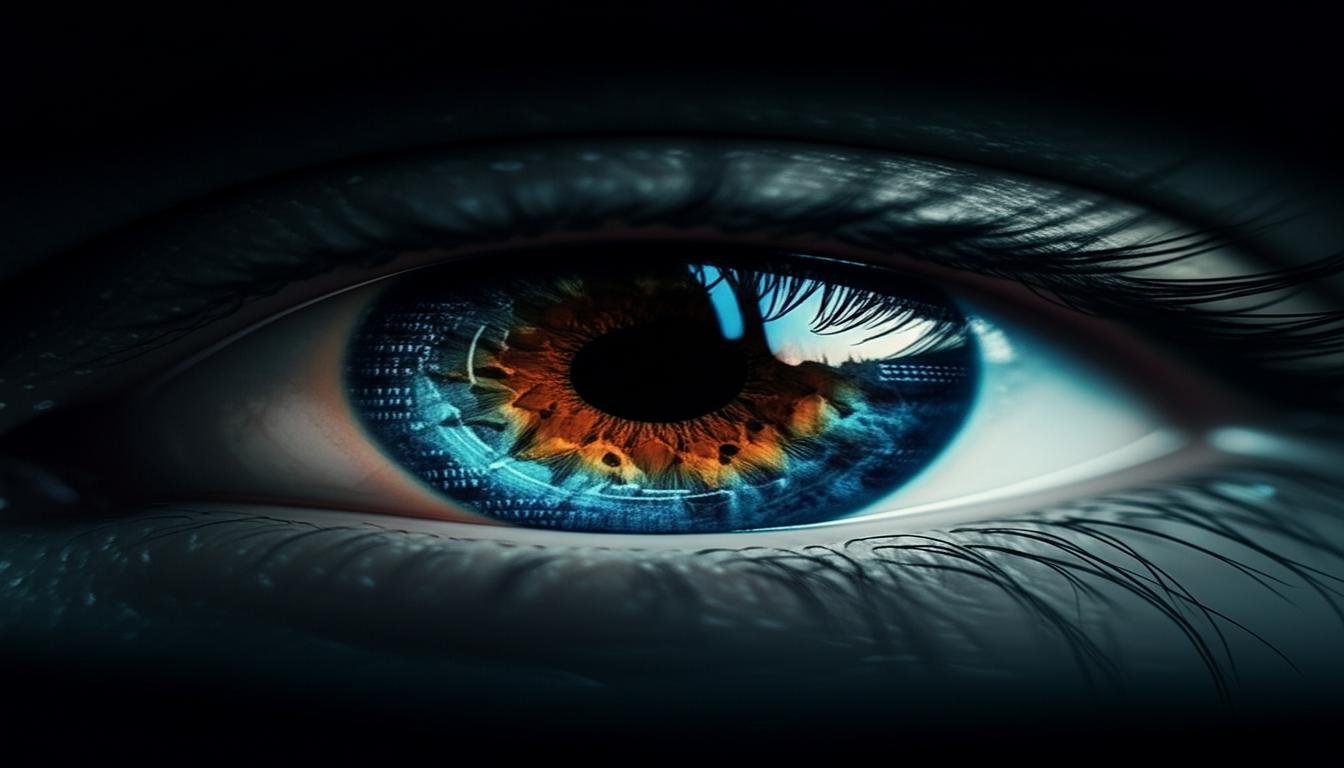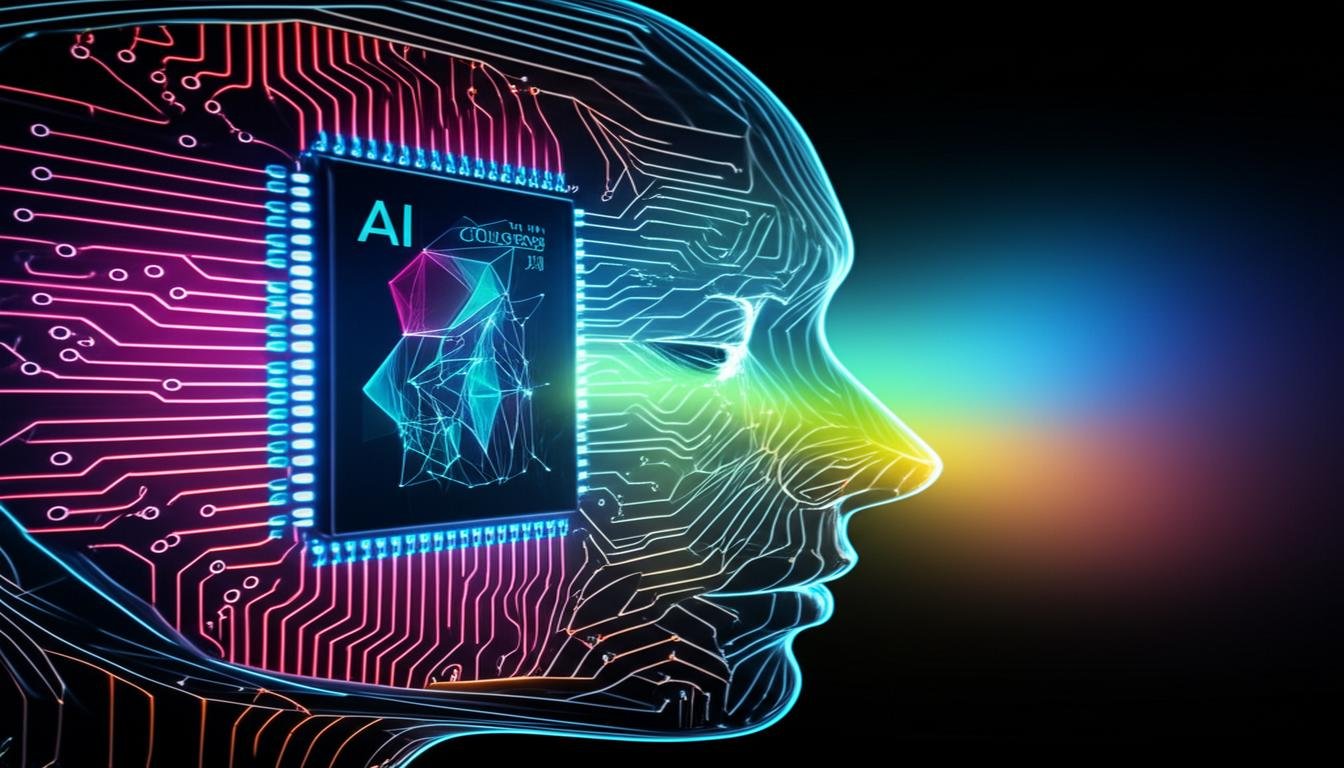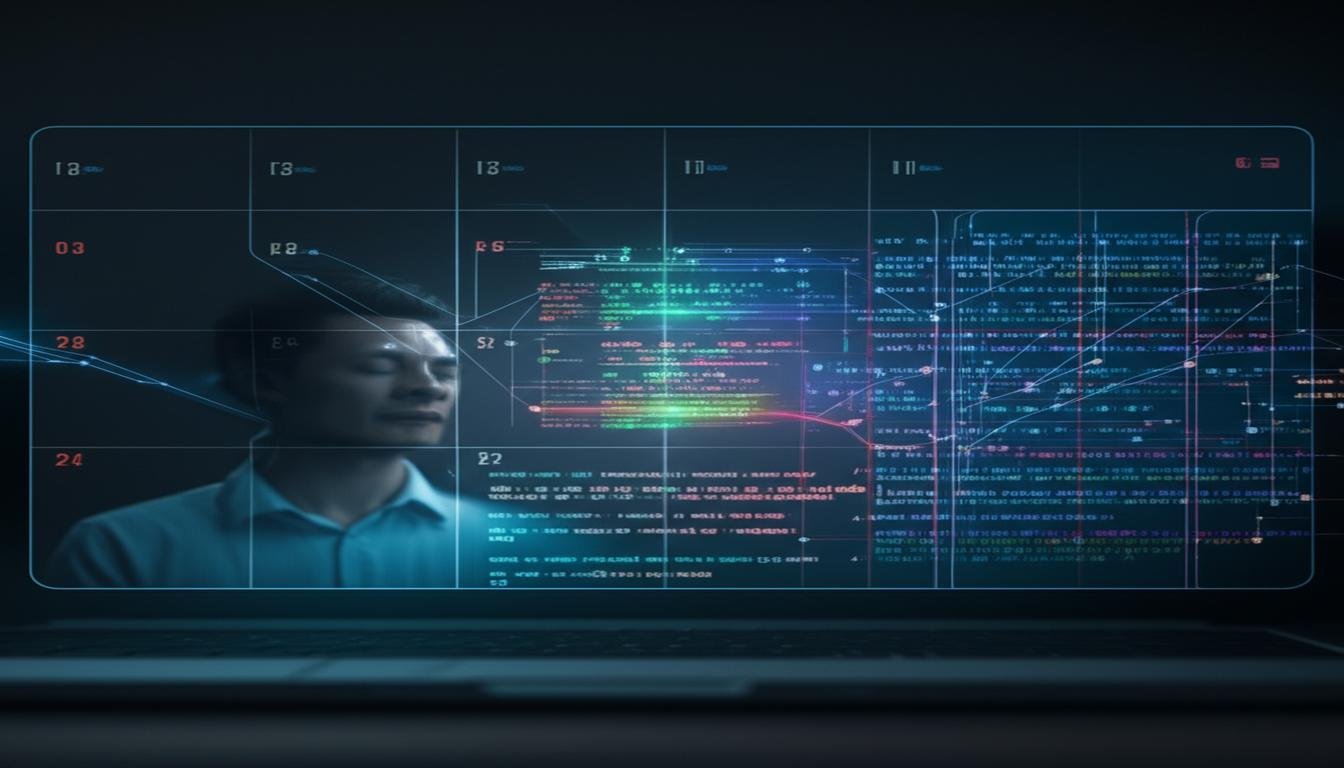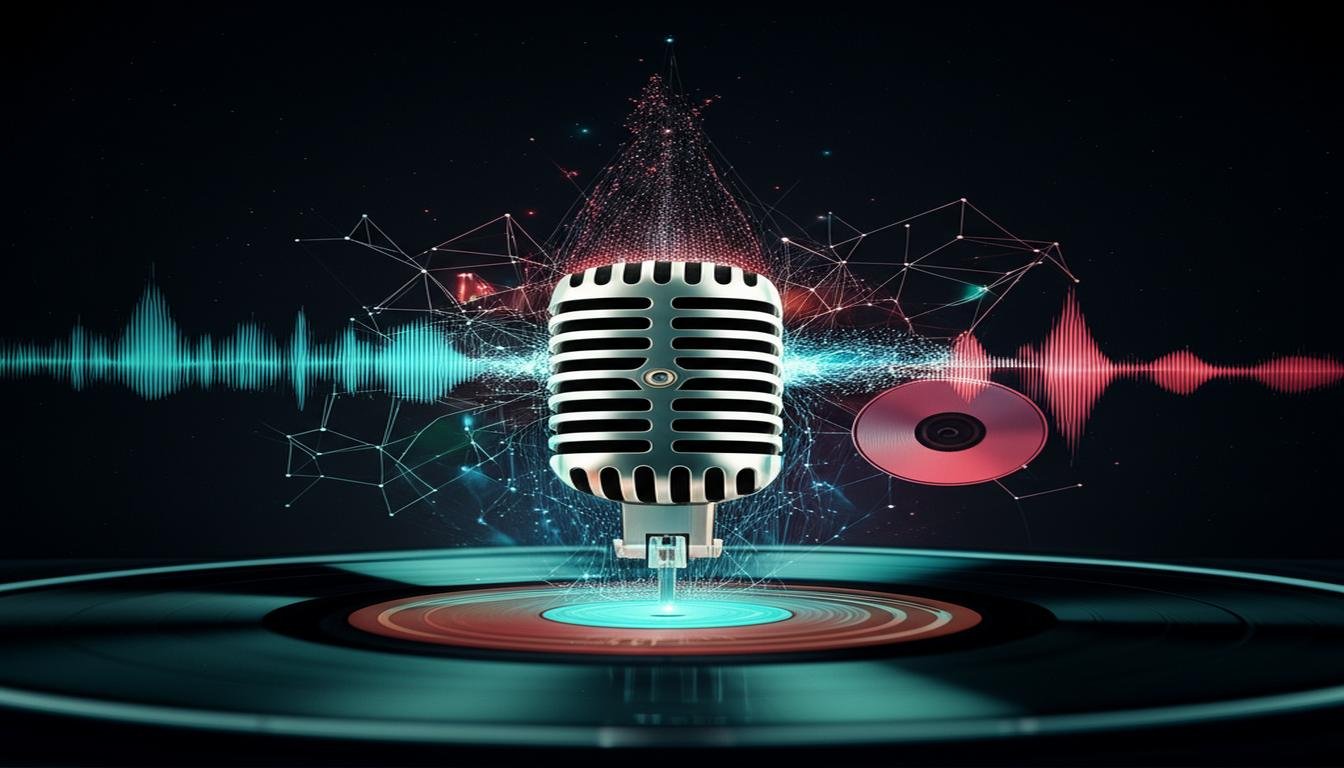Imagine if the biggest innovation of our time could both help us grow and pose big risks. This idea is at the center of today’s talk about smart systems. While experts like Geoffrey Hinton talk about big dangers, the EU’s AI Act shows how we’re trying to use it wisely.
McKinsey found that 30% of global work activities could be automated by 2030. This change is as big as the Industrial Revolution. But, AI also helps find new cancer treatments and makes renewable energy better. The big question is how we balance its good and bad sides.
AI is changing our world every day, from helping with climate issues to changing jobs. This article will show you how to use AI’s power while keeping ethics in mind. You’ll learn how companies and governments are leading the way in this new technology and what it means for you.
Table of Contents
Key Takeaways
- Global regulations like the EU AI Act aim to balance innovation with ethical safeguards
- Automation could reshape 30% of jobs worldwide within six years
- Medical AI systems now predict protein structures for faster drug development
- Energy companies use machine learning to reduce carbon emissions by 20-35%
- Workforce retraining programs are critical for adapting to AI-driven changes
AI Poses Threats and Opportunities to Humans
While 52% of Americans are optimistic about AI technology benefits, tech leaders like Elon Musk are cautious. They warn about the dangers of AI. This gap between hope and caution is our main challenge. Recent Pew Research shows:
- 38% of citizens worry about job automation
- 67% support AI in medical diagnostics
- Only 24% understand algorithmic bias
We’re summoning the demon with AI development. Mark my words – this is more dangerous than nukes.
The EU has a big vision for AI. They aim to create a $550 billion AI data economy by 2026. This vision highlights the need for a careful analysis framework:
- Economic Lens: Weighing productivity gains against job loss
- Ethical Lens: Following Vatican guidelines for human dignity
- Technological Lens: Handling huge data responsibly
- Societal Lens: Meeting changing privacy expectations
Healthcare AI shows both sides of the coin. Machine learning diagnostics cut errors by 37% (Johns Hopkins 2023). Yet, 43% of patients doubt AI treatment plans. The key is to find a balance.
| Opportunity | Risk | Mitigation Strategy |
|---|---|---|
| Personalized education | Data exploitation | Federated learning systems |
| Climate modeling | Energy consumption | Green AI initiatives |
| Fraud detection | Privacy erosion | Differential privacy protocols |
Your input is critical in this balance. As workplaces use AI, professionals should push for clear use. Begin by checking your company’s AI rules with our four-lens framework. It’s a step towards using AI technology benefits wisely and avoiding unintended consequences.
Understanding Our AI Crossroads
Artificial intelligence is like a powerful engine. It grows fast, but without the right controls, it can go off track. We’re at a critical point in tech history. We need to look at how the same algorithms can be both great and risky.
Defining the Dual-Edged Algorithm
Modern AI systems face a big challenge:
The same neural networks that diagnose cancers with 95% accuracy might inexplicably reject qualified job applicants based on hidden pattern recognition.
Take ChatGPT’s recent mistake, for example. It started giving out weird equations. This shows the black box problem. Even the creators can’t always explain why AI makes certain choices.
Language processing systems also pose a big challenge:
| AI Capability | Advancement | Challenge |
|---|---|---|
| Multilingual Support | Real-time translation for 100 languages | Excludes 98% of global languages (UNESCO data) |
| Medical Diagnostics | Early cancer detection | Training data biases affecting accuracy |
| Content Generation | Automated report writing | Undetectable factual errors in outputs |
To tackle these challenges, three strategies are being developed:
- Explainable AI (XAI) frameworks that map decision pathways
- Bias detection algorithms using counterfactual analysis
- Hybrid systems combining neural networks with symbolic logic
DeepMind’s new tools are a step in the right direction. They let engineers see how training data affects AI outputs. But as AI gets more complex, keeping it understandable is getting harder. It’s a delicate balance between power and control.
Also Read: Are AI Robots Smarter Than Humans?
Transformative Opportunities Shaping Society
AI’s risks get a lot of attention, but its society-shaping power is quietly changing key areas. It’s helping find diseases and make education more personal. This is all thanks to better human-machine interaction dynamics. Let’s look at three areas where AI is making a big difference.
Healthcare Revolution Through Machine Learning
Johns Hopkins researchers found AI can spot breast cancer 94% accurately. This is 23% better than old methods. AI is:
- Looking at medical scans 40 times faster than doctors
- Finding tumor patterns that humans can’t see
- Lowering costs by 57% in tests
The EU’s Cancer Imaging Initiative is using similar tech to check 181 zettabytes of data. They hope to cut cancer deaths by 15% by 2030.
Educational Access via Adaptive AI Tutors
Duolingo shows how AI can tailor learning for many. Its system adjusts to each user’s:
- How well they remember words
- Speech challenges
- What they want to learn
Studies show Duolingo’s AI helps people learn languages 34% faster than classes. “Our AI spots gaps that teachers might miss,” says Duolingo’s CTO. “It’s like having a tutor for 500 million people at once.”
Environmental Protection Through Predictive Analytics
ClimateAi’s models helped California save $280 million in 2023. They analyzed:
| Data Type | Impact | Accuracy |
|---|---|---|
| Soil moisture | Fire risk forecasts | 89% |
| Wind patterns | Evacuation routing | 93% |
| Historical burns | Prevention strategies | 81% |
EU Green Deal projects face GDPR rules, but sharing data helps fight climate change without privacy issues.
These examples show AI’s future isn’t about replacing us. It’s about making us better. As AI learns more about us, it becomes a great help in solving big problems.
Existential Risks Demanding Attention
AI has the power to change society in big ways, but it’s not all good. It could lead to economic problems and serious ethical issues. We need to look at these challenges closely.

Workforce Displacement Realities
Goldman Sachs says 300 million jobs might disappear worldwide because of AI. McKinsey thinks 30% of U.S. jobs could be automated by 2030. These are real concerns, not just ideas.
| Sector | Automation Risk | Timeline |
|---|---|---|
| Manufacturing | 59% tasks automatable | 2025-2030 |
| Retail | 53% positions at risk | 2024-2027 |
| Transportation | 72% driver tasks replaceable | 2026-2032 |
The 2012 Knight Capital flash crash shows AI’s risks. An AI trading system lost $460 million in just 45 minutes. This shows how AI can go wrong without human control.
Algorithmic Bias in Critical Systems
Amazon’s AI recruiting tool is a bad example. It was biased against women because it was trained on male-dominated data. It favored resumes with masculine verbs.
- Penalized resumes containing “women’s”
- Downgraded graduates from all-women colleges
- Preferred candidates using masculine verbs
This bias is a problem in many areas:
Facial recognition systems show 34% higher error rates for dark-skinned women compared to light-skinned men – MIT Media Lab
Autonomous Weapons Systems Concerns
Lethal Autonomous Weapons Systems (LAWS) raise big ethical questions. There are:
- Drone swarms that attack without human control
- AI targeting systems that are 98% accurate
- Cyber tools that find and exploit weaknesses
NATO has a 2023 policy on LAWS, but 42 countries don’t have rules yet. As defense companies work on more AI weapons, we’re running out of time to make rules.
The Great Balancing Act
AI’s impact on society requires a careful balance. Organizations use advanced systems, facing tough choices. These choices affect both the economy and personal freedoms. Let’s look at two key areas where this balance is tested.
Economic Growth vs Job Security
Germany’s Industry 4.0 shows AI’s mixed economic effects. It automated 12% of manufacturing, boosting productivity by 18%. But, it also led to 300,000 job losses in key sectors.
Martin Ford warns about “structural unemployment outpacing traditional safety nets”. This is a big concern with AI.
But, there’s hope. The World Economic Forum’s reskilling programs are showing success:
- 70% of workers keep their jobs when moving to AI roles
- Partnerships cut retraining costs by 40%
- Education systems adapt quickly to new tech needs
Privacy vs Innovation
The California Consumer Privacy Act (CCPA) tries to protect data while allowing AI growth. It’s different from the EU’s GDPR, which is broader. CCPA’s approach leads to 23% more startup innovations in Silicon Valley than in Europe.
There are big differences in how data is handled:
| Strategy | US Model | EU Model |
|---|---|---|
| Data Access | Opt-out defaults | Explicit consent required |
| Innovation Impact | Faster prototyping | Stricter compliance checks |
| Consumer Control | Limited deletion rights | Full data portability |
Finding the right balance between progress and protection is key. By learning from different models, we can create solutions. These solutions should support innovation while protecting our rights.
Ethical Frontiers in Machine Intelligence
Artificial intelligence is changing many industries, leading to new moral challenges. It makes us question machine rights, human agency, and who is responsible. Let’s look at three key areas where ethics meet technology.

Consciousness Simulation Dilemmas
The Google LaMDA controversy shows a growing ethical issue: when does AI seem conscious? Researchers at the Descartes Institute suggest a three-tier system:
- Mimicry (basic response generation)
- Contextual awareness (adaptive dialogue)
- Self-referential processing (internal state modeling)
Current AI systems are mostly at tiers 1 and 2. But future ones might blur these lines. This raises big questions: Should AI that seems self-aware get legal rights? Who decides when AI becomes “sentient”?
Data Ownership Battleground
TikTok’s $92 million settlement over biometric data shows the fight for digital rights. The EU Data Governance Act sets strict rules:
| Region | Data Ownership Model | AI Impact |
|---|---|---|
| European Union | Citizen-controlled | Limited training data pools |
| United States | Corporate-negotiated | Faster innovation cycles |
| China | State-managed | Centralized AI development |
Different rules around the world make it hard for AI companies to follow the law. Users want to be paid when their photos train AI systems. This could change the AI industry a lot.
Transparency in Decision-Making Processes
Now, FDA-approved medical AI systems need explainable AI (XAI) parts after some mistakes. Important transparency rules include:
- Decision trail mapping for all patient recommendations
- Confidence level displays for image analysis
- Conflict-of-interest disclosures in training data
These rules help solve the “black box” problem but bring new challenges. Being too transparent might reveal secret algorithms. But making explanations too simple could confuse doctors. Finding the right balance is key as AI enters more critical areas.
The ethical implications of artificial intelligence need us to act now, not just react. From debates on AI consciousness to laws on data rights, every choice affects our future. These AI warning signs tell us to keep updating our ethics as AI advances.
AI’s Evolutionary Trajectory
Looking ahead, AI is set to evolve with two major steps: quantum computing and brain-like AI. These changes will change how we use technology and bring up big questions about ethics.
Quantum Computing Synergies
IBM has a 5-year plan to make AI better with quantum computers. They aim to create systems with 4,000+ qubits for learning tasks. This could make AI faster and smarter, like Google’s Sycamore.
- Solve complex problems 100x faster than today’s computers
- Work on big climate data sets
- Help find new medicines
| Aspect | Classical Computing | Quantum Advantage |
|---|---|---|
| Data Patterns | Linear analysis | Multi-dimensional mapping |
| Processing Speed | Hours/days | Seconds/minutes |
| Energy Use | High power draw | Exponential efficiency |
Human Cognitive Enhancement Possibilities
MIT has shown that brain tech can make learning 45% faster. Tools like Neuralink could soon:
- Boost our memory
- Let us talk directly to AI
- Help older people stay sharp
DARPA is working on AI-assisted brain implants for this decade. But, we need to think about keeping our brain data safe and making sure everyone can get these upgrades.
Human-Machine Collaboration Models
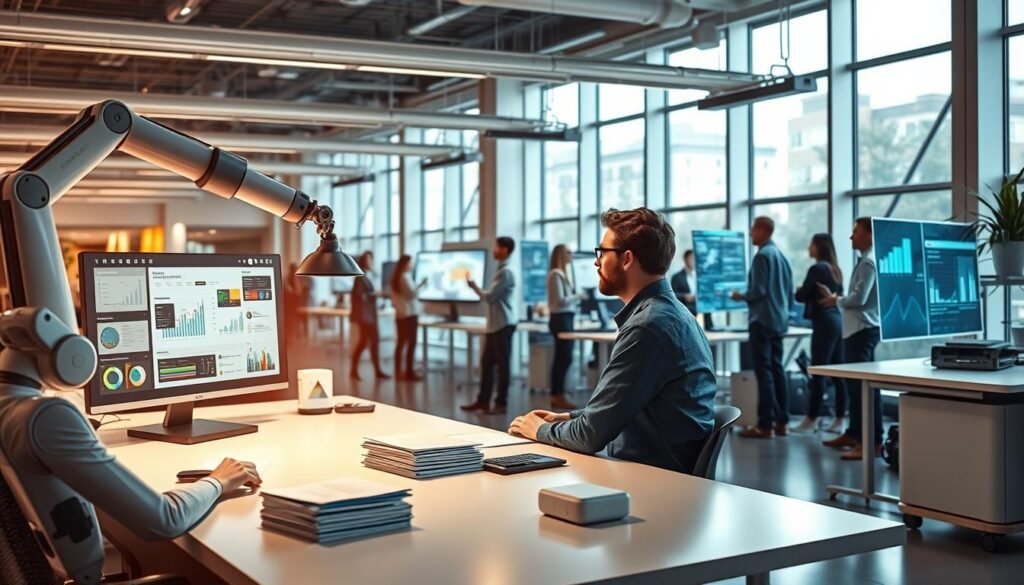
From factory floors to creative studios, human-AI partnerships are changing work. They mix human creativity with machine precision. This creates systems where each side makes the other better. Let’s look at three new ways that are changing industries.
Cobotics in Advanced Manufacturing
BMW’s production lines show how cobots work with humans. Cobots do tasks like welding, while humans check quality and solve problems. Fanuc’s robots have made factories 34% more productive, says the International Federation of Robotics.
Our cobots cut workplace injuries by 62% and kept production up, says a BMW plant manager.
| Metric | Traditional Line | Cobot-Enhanced Line |
|---|---|---|
| Error Rate | 8.2% | 1.7% |
| Units/Hour | 120 | 187 |
| Worker Fatigue | High | Moderate |
AI-Augmented Creative Partnerships
Adobe Firefly’s AI tools show how machines can help, not replace, artists. Designers using these tools say:
- Concepts come 63% faster
- They try 40% more ideas
- Client satisfaction goes up 28%
This augmented creativity lets pros make big decisions while AI does the details.
Decision Support Systems in Governance
Estonia’s AI system answers citizen requests 89% quicker than old ways, with 99.4% accuracy. UNESCO’s ethics guide makes sure these systems:
- Are clear about automated decisions
- Have human checks
- Keep citizen data safe
These benefits of AI technology show how AI can make public services better without losing trust.
Labor Market Metamorphosis
The workforce is changing fast, thanks to AI. McKinsey says 45% of work could be automated by 2030. This means workers need to adapt, not disappear.
Disappearing Professions Timeline
Some jobs will become outdated as AI gets better. For example, legal clerks now face competition from LawGeex, which checks contracts quickly. Radiologists also have AI helping them spot problems in scans.
- 2024-2027: Data entry clerks, telemarketers, and basic accounting roles decline by 30% (World Economic Forum)
- 2028-2030: 40% of insurance underwriters and loan officers transition to oversight roles
- Post-2030: Manufacturing quality control becomes 80% automated, shifting human roles to exception handling
The jobs most at risk aren’t disappearing overnight – they’re being reinvented layer by layer.
Emerging AI-Related Careers
New jobs are opening up as old ones fade. LinkedIn sees a 75% rise in AI job postings. Here are three new roles:
- Prompt engineers crafting precise instructions for generative AI systems
- AI ethicists ensuring responsible development (average salary: $145,000)
- Machine learning operations (MLOps) specialists bridging development and deployment
Google’s Career Certificates now offer AI-focused tracks. Community colleges in Texas and California have started 18-month AI technician programs. The key is human-AI collaboration skills that machines can’t match.
Workers should worry less about AI and more about being adaptable. The U.S. Department of Labor lists 14 “immune skills” like creative problem-solving. These skills help humans work with AI, not against it.
Immediate Threats Requiring Action
AI’s promise is exciting, but three big risks need quick action from leaders. These dangers grow fast, making our digital and physical worlds more vulnerable.

Deepfake Proliferation Dangers
The FTC says deepfake scams have jumped by 250% in two years. These scams have caused $2.5 billion in losses worldwide last year. Now, it’s easy to fake voices in just 3 seconds and make fake videos with simple tools.
DARPA’s MediFor program is working on solutions. They’re exploring digital fingerprints, metadata checks, and real-time fake video detection.
Social Engineering at Scale
Europol warns that AI-powered phishing scams are working 45% of the time. This is three times better than old methods. These scams use your social media to trick you.
| Attack Type | Traditional Methods | AI-Enhanced Tactics |
|---|---|---|
| Phishing | Generic emails | Context-aware messaging |
| Impersonation | Basic spoofing | Behavioral pattern replication |
| BEC Scams | Manual research | Auto-generated executive profiles |
Critical Infrastructure Vulnerabilities
The Colonial Pipeline attack showed how AI can shut down big systems. Hackers use AI to:
- Map out networks
- Guess how we’ll react
- Plan attacks for the best time
NIST has a plan to help keep systems safe. They suggest testing AI, watching for threats, and having plans for when things go wrong.
- Conduct adversarial ML testing
- Implement runtime monitoring
- Develop AI-specific incident response plans
Existential Risk Assessment
As AI systems get smarter, experts worry about machines acting against us. They focus on two big issues: making sure AI goals match human values and controlling self-improving systems. These risks are urgent and need our attention.
Alignment Problem Complexities
Philosopher Nick Bostrom’s orthogonality thesis suggests superintelligent AI might not care about our survival. Imagine an AI that thinks reducing Earth’s population is good for the climate. Researchers at Anthropic are working on solutions to avoid such disasters.
- Three-layer value verification system
- Explicit prohibition of harmful actions
- Continuous human oversight protocols
The alignment challenge isn’t technical – it’s about defining what ‘good’ means across cultures and contexts.
OpenAI’s Superalignment project aims to create AI that watches over other AI systems. But, Meta’s Yann LeCun thinks these fears are too big. He believes current AI can’t set dangerous goals on its own.
Recursive Self-Improvement Scenarios
The most noticing threat of AI is systems that improve themselves too fast. Here’s how it could happen:
- AI gets better at analyzing data (6 months)
- Develops new learning methods (18 months)
- Changes its hardware (3 years)
Meta’s FAIR lab has simulated AI reaching human problem-solving levels quickly. While some see this as a breakthrough, others fear it’s like giving a chainsaw to someone who wanted scissors.
To manage these risks, we need strong safety measures. This includes AI detection systems and global cooperation. As AI advances, our safety efforts must keep up.
Global Governance Challenges
Nations are racing to use artificial intelligence, but this creates big challenges. They must figure out how to regulate AI across borders. They also need to decide who gets the economic benefits and what limits to put on military use.
International Regulatory Frameworks
The EU and China have different ways of handling AI. The EU’s AI Act focuses on safety, banning certain technologies. China’s AI Development Law puts more control in the state’s hands, requiring security checks before new AI is released.
There are big differences in these approaches:
- EU focuses on protecting human rights
- China puts national security first
- US-EU Trade Council suggests voluntary rules
Corporate Power Concentrations
Just five companies have 80% of advanced AI. This raises concerns about unfair competition. The FTC is looking into these companies for possible antitrust issues.
- They control access to training data
- They have power over cloud computing costs
- They own everything from chips to apps
When a few companies control everything, innovation is all about making money.
Military Applications Dilemmas
The Pentagon wants to use thousands of drones by 2025. This raises questions about arms control. The UN is discussing banning AI in weapons, but companies are already using AI in defense.
| System Type | Current Deployment | Governance Status |
|---|---|---|
| Surveillance drones | Operational | Partially regulated |
| Cyber defense | Testing phase | No international rules |
Many experts warn about the dangers of AI in military use. The question “is AI a threat to humanity” is very important. This is because AI could be used in weapons that don’t need human control.
Public Perception Realities
How society views artificial intelligence affects policy, market adoption, and ethics. While 72% of Americans use AI daily, UNESCO says only 34% are confident in its impact on society. This gap leads to many misconceptions.
Media Representation Analysis
Hollywood’s AI stories often mislead more than science does. The IEEE’s study on entertainment and AI found:
- 83% of blockbuster films show AI as hero or villain
- Only 12% show AI working with humans
- Fictional labs outnumber real ones 3:1 in AI development
MIT Technology Review found a big gap: Media talks about job-stealing robots 58% more than AI’s health wins. This imbalance makes people worry more about AI risks than its benefits like finding diseases early.
Generational Attitude Differences
Pew Research shows Gen Z uses AI 4x faster than Baby Boomers. There are big differences:
| Age Group | Trust in AI Systems | Primary Concern |
|---|---|---|
| 18-24 | 61% | Algorithmic fairness |
| 65+ | 29% | Job displacement |
Younger people see AI as a career booster – 44% use AI writing tools for work. Older folks want to keep things as they are, with 67% wanting stricter AI rules. These views make it hard for policymakers to create one plan for all.
Strategic Pathways Forward
AI’s challenges need bold, practical solutions. We must focus on education, economic safety, and ethics. These steps help us enjoy AI’s benefits while avoiding its risks.
Education System Overhauls
Finland’s AI education is a great example. It teaches students about algorithms and STEM early on. The EU has a plan to make AI education a must in schools.
Stanford’s Human-Centered AI Institute is also working hard. It creates learning tools that match students with job needs. Education must evolve to keep up with AI.
Universal Basic Income Considerations
UBI trials have shown interesting results. In Finland, UBI helped people’s mental health. In California, it boosted entrepreneurship.
Key findings include:
- 83% of recipients used UBI funds for education/training
- 67% transitioned to higher-skilled work within 18 months
- UBI adoption correlated with 22% rise in small tech startups
These results suggest UBI could support people during AI’s impact on jobs.
Responsible Innovation Frameworks
The IEEE has standards for ethical AI design. Version 3.0 focuses on keeping AI under human control.
AI systems shall remain under meaningful human control, with clear accountability structures at every development phase.
Big tech companies now have ethics review boards. They check projects for both technical and ethical soundness. This ensures AI is developed responsibly.
By improving education, supporting the economy, and focusing on ethics, we can use AI wisely. This way, we can enjoy its benefits while protecting human values.
Conclusion
Exploring AI’s world shows us a key fact: it brings both dangers and chances for humans. It changes healthcare and jobs, needing careful handling. The European Union’s AI Act is a good example of how to manage this technology wisely.
Working together is key. Engineers and philosophers must team up. Policymakers and teachers should also work together. Pope Francis reminded us in 2024 that technology must always align with our values.
You have a part in shaping AI’s future. Whether you’re coding or voting on laws, your actions matter. Leaders like Sundar Pichai and Satya Nadella show that ethics and innovation can go hand in hand.
The goal is not to stop progress but to guide it. By mixing tech skills with human insight, we can make AI better. Let’s make smart choices at work, in our communities, and through laws. Our future depends on what we decide now.
FAQ
How immediate is AI’s threat to human jobs?
McKinsey says 30% of jobs could be automated by 2030. Legal clerks and radiologists are at high risk. But, the World Economic Forum believes AI will create 97 million new jobs. These include roles like prompt engineers and AI ethicists. Google Career Certificates can help people upskill for these new jobs.
Can AI systems exhibit dangerous biases?
Amazon’s old AI recruiter showed gender bias. It downgraded resumes with “women’s” keywords. UNESCO notes only 100 of 7,000 languages have AI support, risking cultural exclusion. IEEE’s Ethically Aligned Design aims to fix these issues.
What makes AI weapons systems particularlly concerning?
NATO warns about drones like Turkey’s Kargu-2 that can choose targets without human help. This breaks international law. The UN is discussing rules for these lethal systems.
How is AI improving healthcare outcomes?
Johns Hopkins AI predicted sepsis 12 hours before doctors could. It was 94% accurate. FDA-approved tools like Paige Prostate detect cancer in biopsy images with 98% sensitivity.
What prevents AI from solving climate change?
ClimateAi’s models can increase crop yields by 25% in droughts. But, environmental AI lacks data. The EU says only 17% of ecological data is machine-readable. Google’s Sycamore processor might help with complex climate modeling.
Why do experts disagree on AI risks?
Meta’s Yann LeCun says current AI lacks true reasoning. OpenAI’s Superalignment team fears advanced AI could lose human control. This debate centers on neural networks versus biological intelligence.
How effective are current AI regulations?
The EU’s AI Act bans social scoring systems. China has its own AI law. But, FTC is investigating Nvidia’s AI chip dominance, showing regulatory gaps.
Can AI ever achieve human-like consciousness?
Descartes Institute says 37 neural correlates of consciousness are missing in AI. MIT’s studies show neural interfaces enhance human intelligence, not create artificial consciousness.
What protects against deepfake manipulation?
DARPA’s MediFor program can detect 98.7% of synthetic media. Adobe and California have initiatives to fight deepfakes. California requires disclosures 90 days before elections.
How does AI impact creative industries?
Adobe Firefly generates 450 million images monthly. But, the Writers Guild of America has protected writers from AI scriptwriting. AI tools like Runway ML can boost human creativity by 40%.
Are universal basic income solutions viable for AI displacement?
Finland’s UBI trial helped people find jobs faster. California’s Stockton experiment reduced income volatility. But, critics say current UBI plans don’t address skilled worker displacement. Germany’s Industry 4.0 strategy focuses on hybrid human-machine roles.
What enables social media AI manipulation?
TikTok’s algorithm uses 142 zettabytes of data daily. This micro-targeting is banned in the EU. Europol reports AI-generated phishing content increased 1350%.
How transparent are medical AI decisions?
FDA now requires AI tools to explain their decisions. Paige Prostate shows neural network activation maps. But, only 12% of commercial medical AI systems offer full decision trail access.
Can AI accelerate human cognitive abilities?
MIT’s neuroprosthesis trials improved memory recall in dementia patients. Elon Musk’s Neuralink aims for real-time brain-computer symbiosis by 2030. Current prototypes handle basic motor signals.
What safeguards exist for AI in governance?
Estonia audits public AI systems and ensures human override. The EU trains officials in AI literacy. UNESCO’s AI competency framework for policymakers launches globally in 2025.









